Izushi sushi is a regional specialty and a point of pride for both Niigata and Hokkaido. The use of local ingredients, including the distinctive soybean sheet wrap, reflects the unique culinary traditions of these areas. Trying Izushi sushi can be a delightful culinary experience if you can visit these regions. Let’s get to it.
What is Izushi?
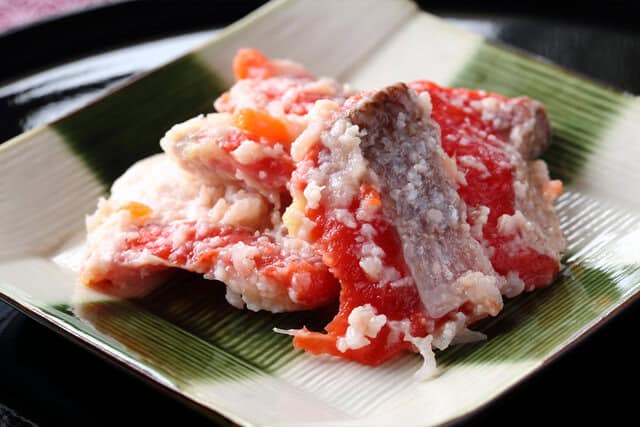
Izushi (飯ずし) is a type of Narezushi and a traditional Japanese dish particularly famous in Japan’s Niigata and Hokkaido prefectures. It is a type of sushi unique to these regions and has a distinctive preparation method. In Izushi sushi, the rice is seasoned with a mixture of rice vinegar, sugar, and salt, similar to the rice used in other types of sushi. However, Izushi sushi is unique in how it is shaped and presented. The rice is packed into small, tightly pressed rectangular or square shapes and then topped with various ingredients. Typical toppings include fresh seafood such as salmon, trout and other local fish and vegetables like cucumbers, carrots, and shiso leaves.
Izushi History
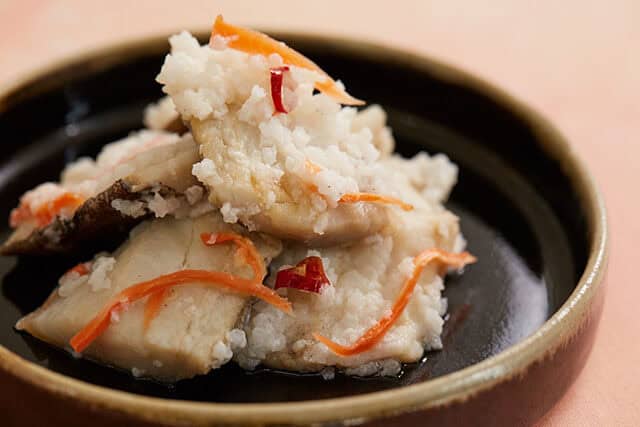
“Izushi” sushi, a traditional dish from Murakami City in Niigata prefecture and Hokkaido, was created as a preserved food. Made by fermenting thinly sliced salmon, herring roe, carrots, daikon radish, salmon roe, and other ingredients with rice and koji, a type of rice malt. The fermentation occurs slowly at low temperatures, producing a mild blend of acidity, aroma, and sweetness from the koji. They use salted salmon, a specialty of Murakami City, to add a unique flavor. This dish is a staple, side dish, and main dish all in one, and often enjoyed during New Year’s in the cold regions from Hokkaido to Tohoku.
Izushi is a local dish primarily found in cold coastal areas, from Hokkaido to the Tohoku region. It likely originated in fishermen’s homes when the first snow fell, and its preparation may vary slightly depending on the area. Various fish like atka mackerel, salmon, sandfish, herring, and saury are used, with atka mackerel being popular in Hokkaido due to its availability throughout the year. Many atka mackerel are caught in Hokkaido during the spring and fall, making it a favored ingredient for Izushi.
Health information about Izushi

Data shows that salmon rice sushi has 153kcal and herring rice sushi has 218kcal. Some fish are high in fat, and others are low in fat, and the fatter the fish, the higher the calories. Although it varies depending on the type and composition of ingredients, the calorie content per 100g of rice sushi is around 150-200kcal. Calories and nutrients vary depending on the ingredients used. Still, you can generally get protein and fat from fish and carbohydrates from rice. You can also get vitamins and dietary fiber from vegetables, albeit in small amounts. Regarding minerals, it contain a lot of sodium because salt is used during pickling.
Seasons for eating Izushi
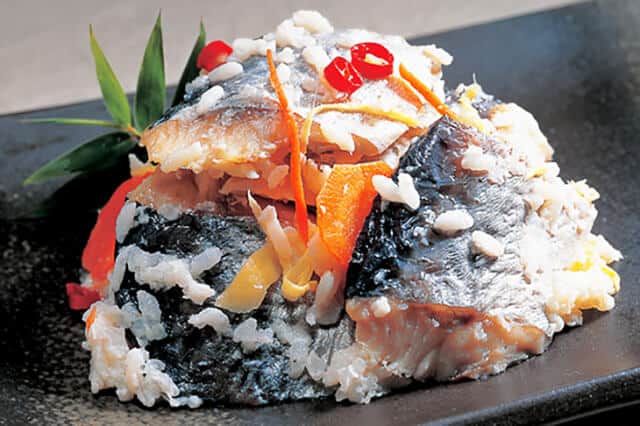
Because rice sushi requires low-temperature fermentation, locals marinated them from late fall to early winter when the temperature drops. Mainly enjoyed as a winter dish and preserved food. Nowadays, we often eat food purchased at supermarkets. Still, in the past, it was a dish so rooted in the region that every household could make it. In particular, there was a custom of eating pickled rice sushi on New Year’s Day starting in late autumn, and it was also considered a dish served on special occasions when relatives gathered together. Even today, many families eat sushi on special occasions such as New Year’s Day. Because fewer people are marinating rice sushi at home, organizations have been formed in various places to pass on the method of making rice sushi and the food culture. Due to this trend, rice sushi has become a traditional dish well-known even to the younger generation.
Difference between Izushi and Narezushi
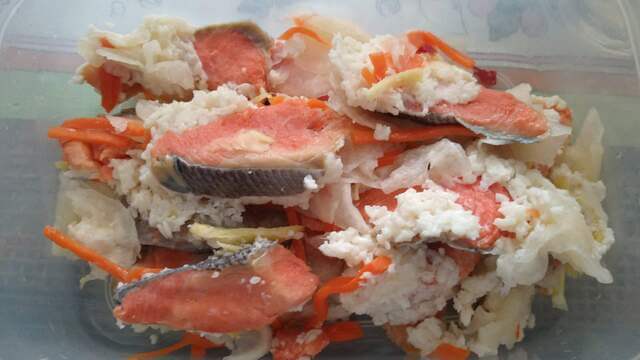
To create unique, umami-rich delicacies, Izushi and Narezushi are two distinct traditional Japanese ferment methods, mainly fish like mackerel and herring. These two techniques differ primarily in their approach to fermentation and flavor profiles.
Izushi, also known as “Nukazuke,” involves burying the fish in a rice bran mixture, called “nuka,” for a specific duration, typically several months. The rice bran acts as a fermenting agent, breaking down the fish proteins and imparting a mild, slightly tangy flavor to the fish. The result is a delicate, lightly fermented fish with a subtle umami taste. Izushi is known for preserving the fish’s natural flavors while enhancing its texture. Often served as a side dish, and the fermented rice bran can also be used in various culinary applications.
On the other hand, Narezushi is a more intense and time-consuming fermentation method. This technique involves taking whole fish, often salted, and allowing them to ferment for an extended period, ranging from several months to even years, in a mixture of salt and rice. The long fermentation process produces a much stronger and more pronounced umami flavor than Izushi. Narezushi is known for its intense aroma and bold taste, often described as an acquired taste due to its low and unique flavor profile. The fermented fish is usually sliced and served as a centerpiece in traditional dishes like sushi or sashimi, accompanied by pickled vegetables and condiments to balance the intense flavors.
Izushi FAQ
- What are the main ingredients of Izushi?
The ingredients used in rice sushi are mainly fish such as atka mackerel and salmon, vegetables such as carrots, cabbage, daikon radish, ginger, rice, and rice malt.
- In what ways can you enjoy izushi?
You can enjoy rice sushi in its basic form by simply putting it in a bowl and savoring its mild and easy-to-eat flavors. It’s a versatile dish that can be a meal or a side with alcohol. Additionally, you can enhance its taste by lightly grilling it on aluminum foil until it’s browned, bringing out the delicious flavors, especially when the fish fat melts. Adding a squeeze of lemon is a recommended way to enjoy it differently.
Izushi Recipe
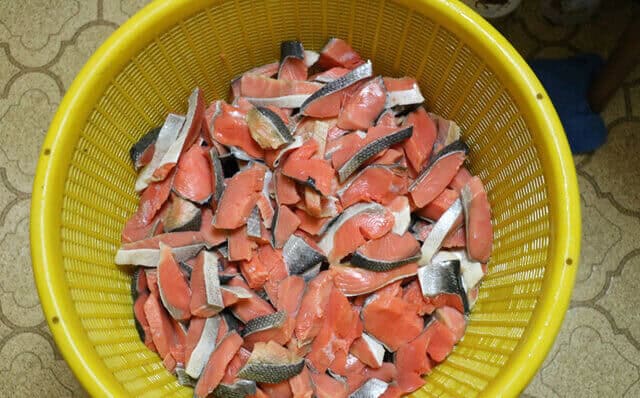
Izushi Ingredients
| Ingredients of Izushi for 10 persons | |
|---|---|
| Sandfish (small) | 600g |
| Japanese white radish | 250g |
| Carrot | 25g |
| Ginger | 10g |
| Malt | 5g |
| Rice | 20g |
| Salt | 10g |
| Sugar | 3g |
| Liquor | 20g |
| Vinegar | 120g |
| Bamboo leaf | 30g |
How to make Izushi?
Remove the head of the sandfish and wash thoroughly, changing the water several times. Soak in vinegar diluted 5 to 6 times daily, then drain in a colander. Cut the radish, carrot, and ginger into strips.
Wash the barrel thoroughly and shake the sake inside.
Line the inside of the barrel with bamboo leaves, add the daikon radish and carrots, sprinkle with salt and sugar, add the sandfish, then add the ginger, koji malt, and rice. Repeat until there are no gaps.
Put a weight on it, let it rest in a cool, dark place, and drain the water when it’s pickled.
Make double this amount and soak for about 40 days.
Where to buy Izushi?
Kamadaya Shoten (鎌田屋商店)
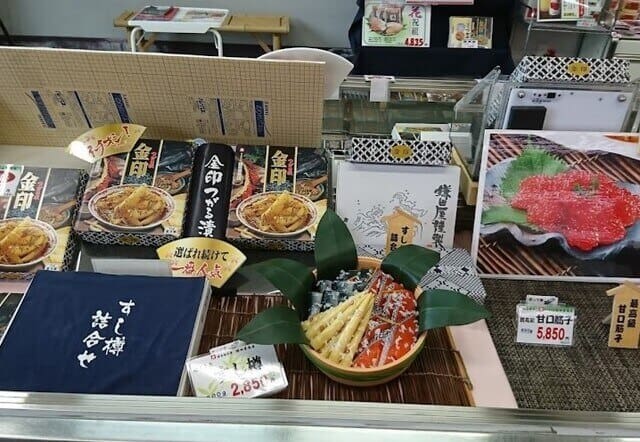
Izushi products, often found in traditional Japanese stores, are known for their unique flavor and preservation methods. Kamada-ya’s proud home-made rice sushi (sockeye salmon sushi, herring sushi, and princess bamboo shoot sushi). You can enjoy the nostalgic taste of Tsugaru as an appetizer for sake or as a side dish with rice.
Nakai Eisaku (中井英策商店)
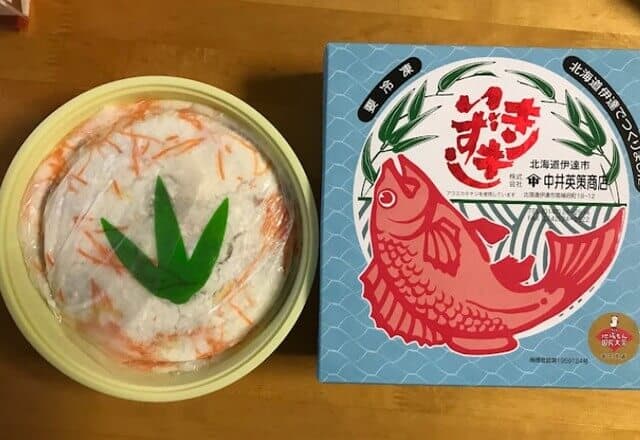
This store has been developing modern versions of the traditional Hokkaido local dish Izushi (rice sushi) that meet the needs of the times by arranging it to suit contemporary tastes while passing down the time-honored production method. This has also created other innovative processed foods that use the excellent agricultural and marine ingredients of the Nishi Iburi region of Hokkaido and have received various awards throughout Japan.
Takeaway
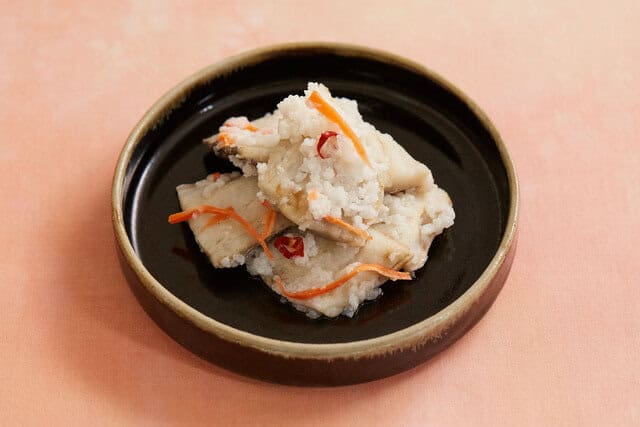
In conclusion, Izushi, with its unique and savory flavors, is a culinary gem you won’t want to miss when visiting Japan. Hailing from Niigata and Hokkaido, this regional delight showcases the art of fermentation and preservation, offering a traditional and delicious taste. So, whether you’re a food enthusiast or a curious traveler, seek out Izushi sushi in Japan.
You can check some Japanese fermented dishes that we know you would like to try too.



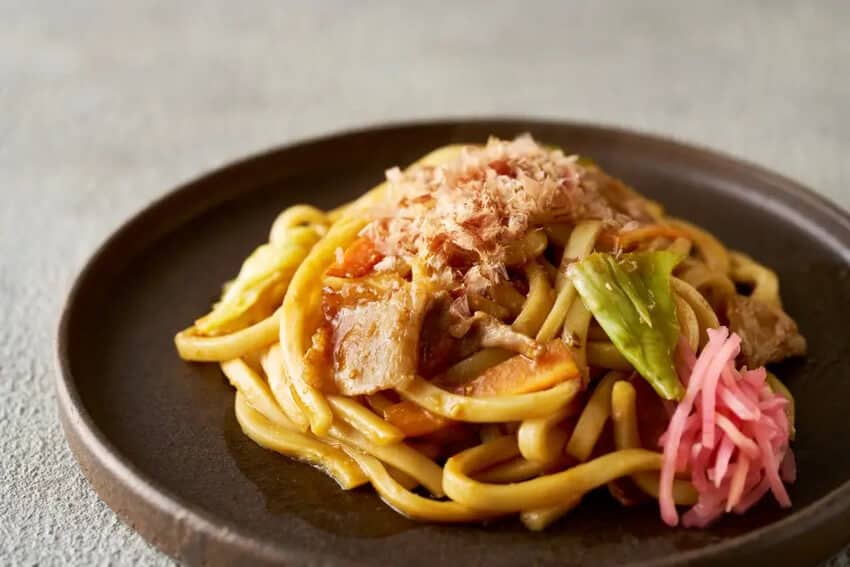
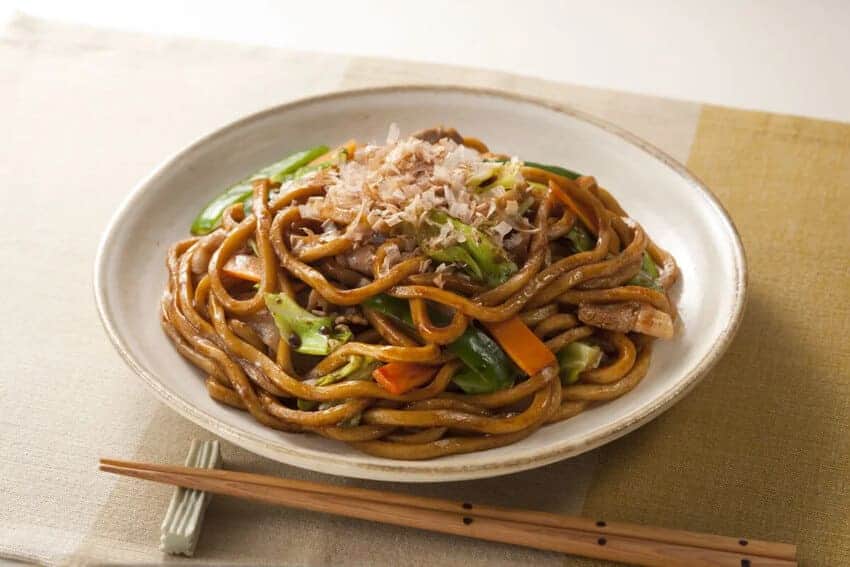

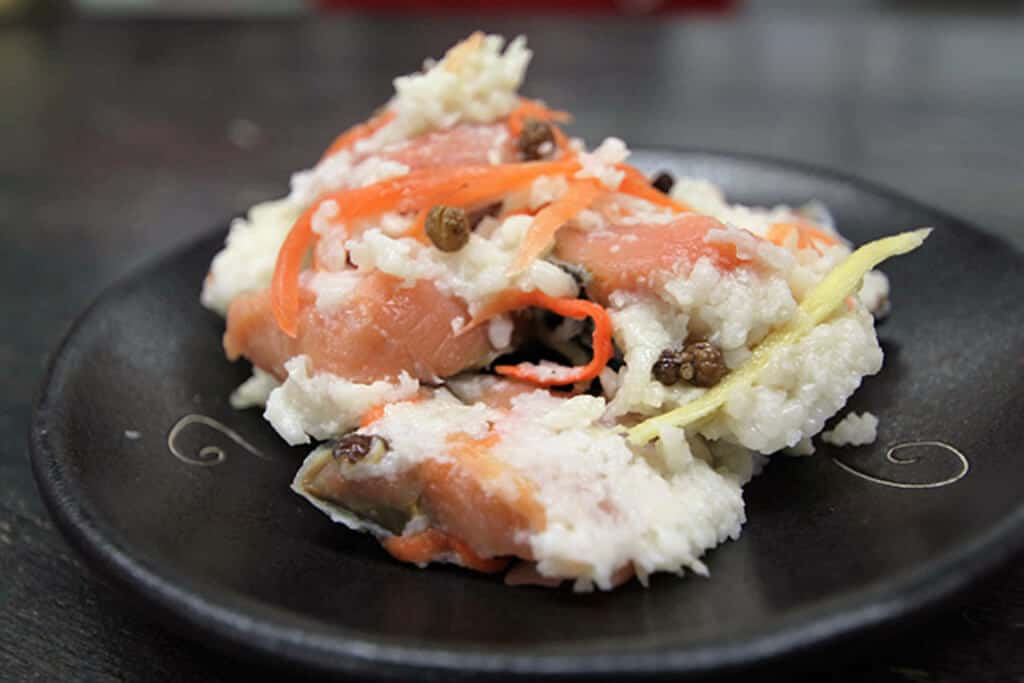
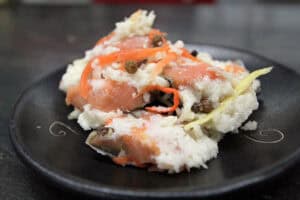
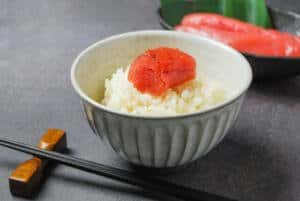
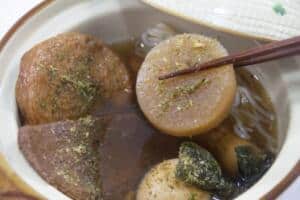
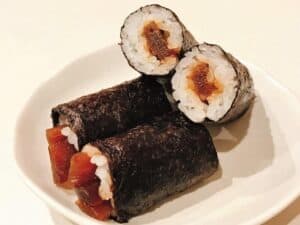
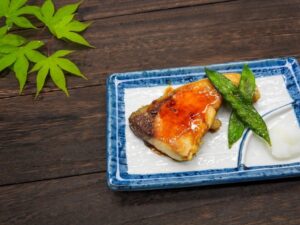
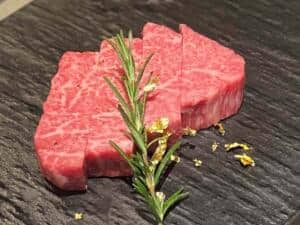
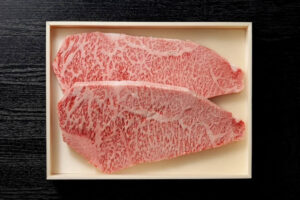
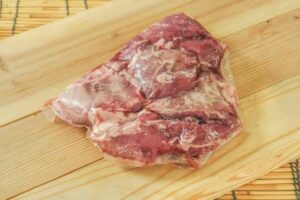
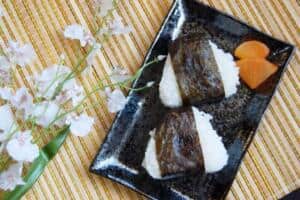
Comments